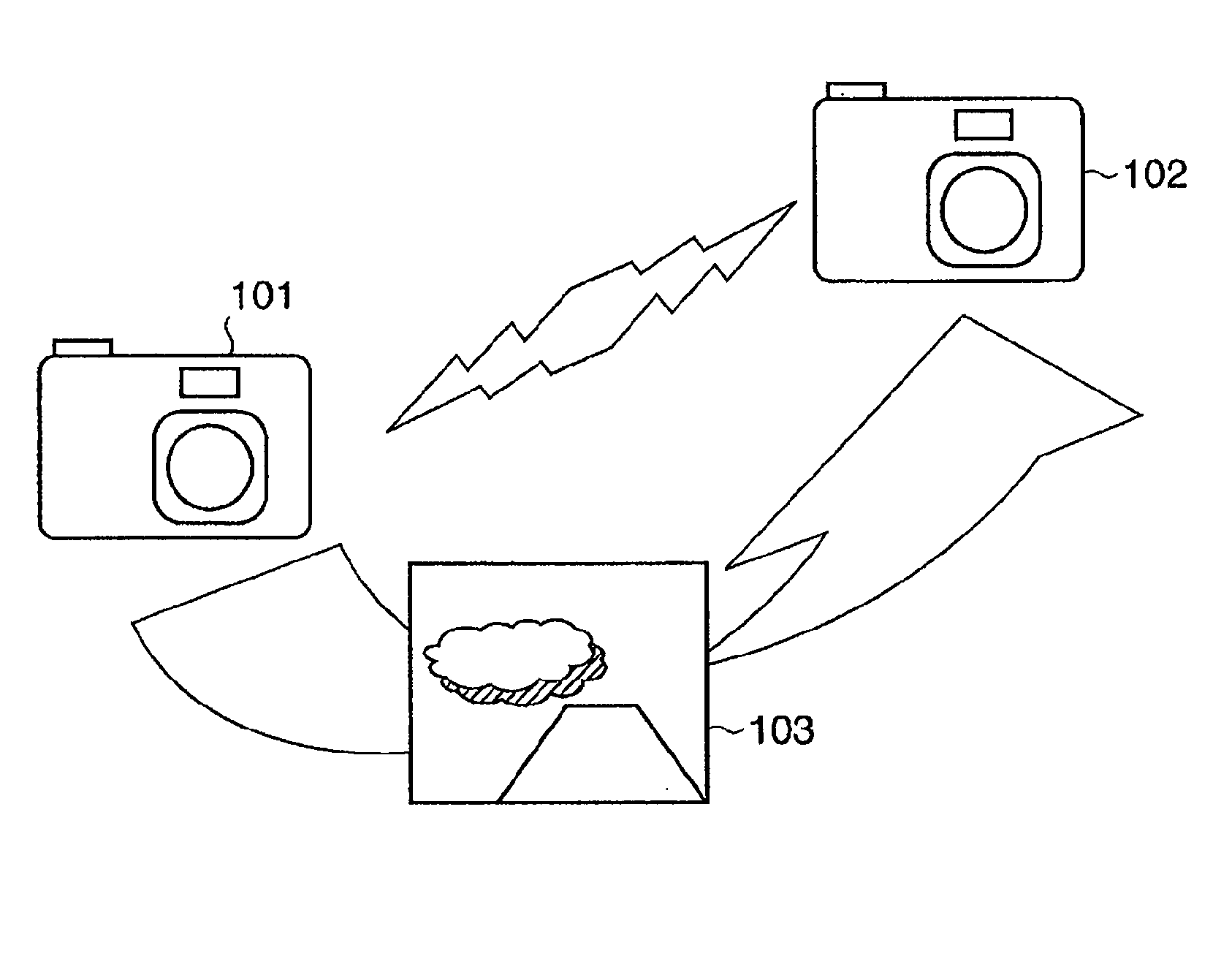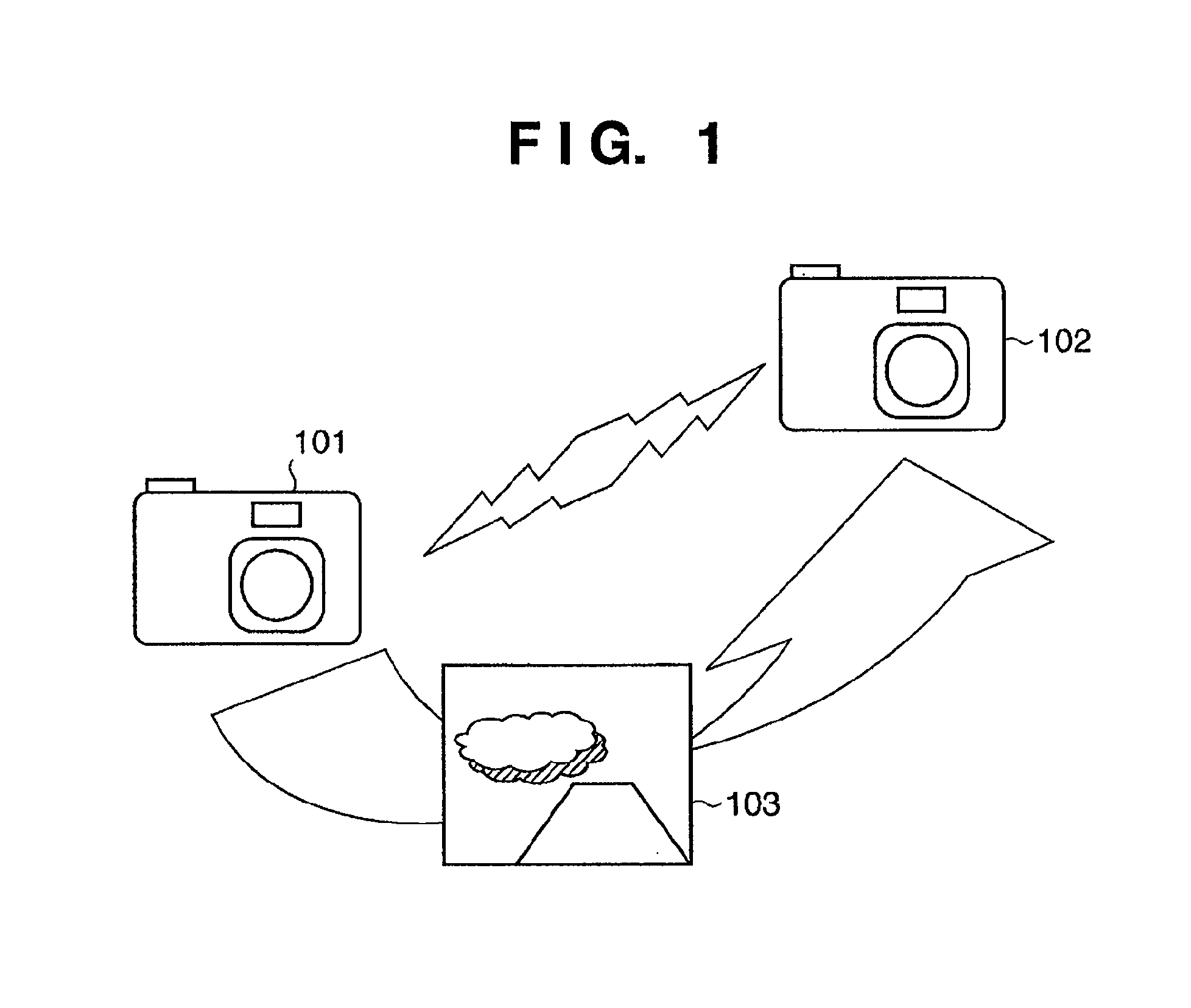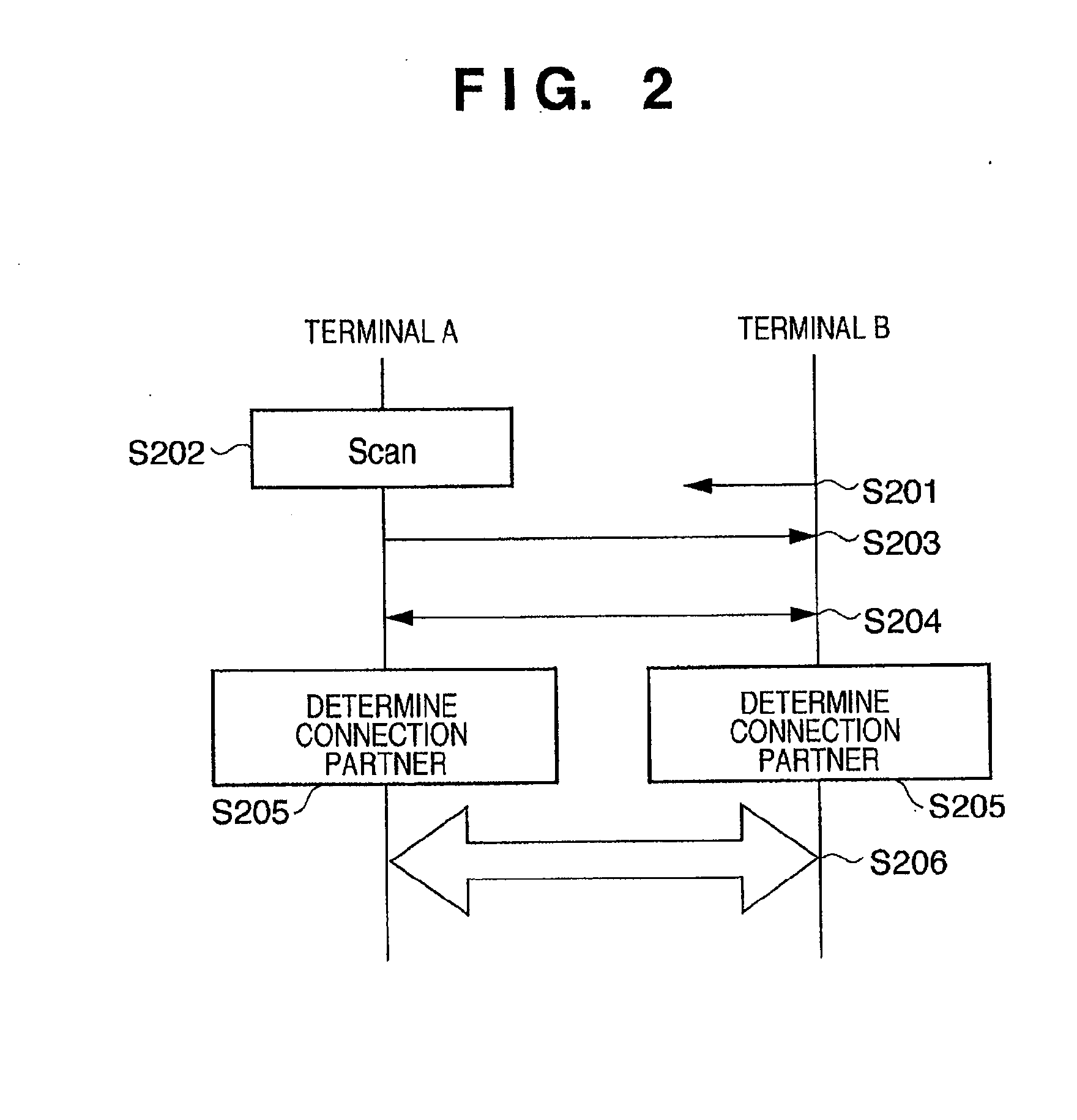Network formation method and communication apparatus
a network and communication device technology, applied in the field of network formation methods, can solve the problems of inability to communicate between the two communication devices, inability to solve the above-described duplicate network construction problem, and inability to perform association processing between communicating communication devices
- Summary
- Abstract
- Description
- Claims
- Application Information
AI Technical Summary
Benefits of technology
Problems solved by technology
Method used
Image
Examples
embodiment 1
[0046]The first embodiment illustrates a case, in which processing used for ad-hoc network formation changes depending on whether the operations are performed on the image sender or image recipient side.
[0047]FIG. 2 is a diagram illustrating an operational sequence executed between two communication devices. In FIG. 2, the communication device A (digital camera 101) is a sender and the communication device B (digital camera 102) is a recipient.
[0048]First of all, the communication device B determines a BSSID based on the MAC address and transmits a beacon comprising the BSSID and a preset SSID (S201). On the other hand, the communication device A scans (searches for) networks with the preset SSID (S202). Scanning methods include passive scanning, during which the network is searched by monitoring a beacon, and active scanning, during which the network is searched by transmitting a probe request and receiving a response thereto. Although the case described herein makes use of passive...
embodiment 2
[0059]Next, a second embodiment of the present invention will be explained in detail by referring to drawings. In the second embodiment, FIGS. 3 and 6 to 8 are used to explain processing that takes place in a communication mode called the remote operation mode, in which a distant camera is remotely operated by a digital camera.
[0060]FIG. 8 is a schematic diagram illustrating remote operation in the second embodiment. FIG. 8 illustrates a case, in which a digital camera 802, which is a remotely operated camera, is remotely operated by a remote operating digital camera 801. In other words, the remote operating digital camera 801 is a device sending operational command data. Furthermore, the remotely operated digital camera 802 is a device receiving operational command data.
[0061]FIG. 6 is a flow chart illustrating processing on the remote operating communication device A (digital camera 801) side in the second embodiment. Moreover, FIG. 7 is a flow chart illustrating processing on the...
embodiment 3
[0069]Next, a third embodiment of the present invention will be explained in detail by referring to drawings. In the third embodiment, FIGS. 3, 9, and 10 are used to explain processing taking place in the communication partner registration mode. It should be noted that registration information transmitted and received in the communication partner registration mode includes MAC addresses, device types (digital camera, printer, etc.), device attributes (input device, output device, etc.), and corresponding application information (direct print feature, etc.).
[0070]FIG. 9 is a flow chart illustrating processing performed by the registration information-sending communication device A (digital camera 101) in the third embodiment. In addition, FIG. 10 is a flow chart illustrating processing taking place in a registration information-receiving communication device B (digital camera 102) side in the third embodiment. It should be noted that pre-determined SSIDs (hereafter referred to as reg...
PUM
 Login to View More
Login to View More Abstract
Description
Claims
Application Information
 Login to View More
Login to View More - R&D
- Intellectual Property
- Life Sciences
- Materials
- Tech Scout
- Unparalleled Data Quality
- Higher Quality Content
- 60% Fewer Hallucinations
Browse by: Latest US Patents, China's latest patents, Technical Efficacy Thesaurus, Application Domain, Technology Topic, Popular Technical Reports.
© 2025 PatSnap. All rights reserved.Legal|Privacy policy|Modern Slavery Act Transparency Statement|Sitemap|About US| Contact US: help@patsnap.com



